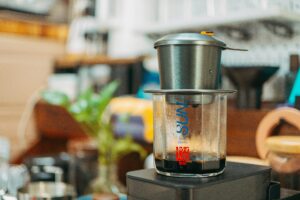Tooth extractions can be a daunting experience, especially for coffee enthusiasts who can’t imagine starting their day without a fresh brew. If you’ve recently undergone this dental procedure, you might be wondering when it’s safe to enjoy your favorite cup of joe again. This blog post will provide you with essential information on how to safely reintroduce coffee into your routine after a tooth extraction. We’ll discuss the healing process, potential risks, and best practices to ensure a smooth recovery.
Understanding Tooth Extraction
To appreciate when you can enjoy coffee again, it’s crucial to understand what happens during a tooth extraction. This procedure involves removing a damaged or problematic tooth from its socket in the bone. The dentist may need to perform a simple extraction for visible teeth or surgical extraction for impacted teeth beneath the gum line. Both types result in an open wound that needs time to heal.
The Healing Process
Healing begins immediately after the tooth is removed. Blood clots form in the socket to protect the bone and nerve endings, serving as the foundation for new tissue growth. Over the next few days, the body works to repair the wound by forming granulation tissue and eventually new bone.
Importance of Careful Post-Op Behavior
Proper post-operative care is essential for a speedy recovery. Any disturbance to the blood clot can lead to complications such as dry socket, delaying healing and causing severe pain. Following your dentist’s aftercare instructions will help minimize risks and ensure a smooth recovery.
Coffee and Healing
For coffee lovers, the wait to enjoy their favorite beverage can be challenging. However, understanding why it’s necessary can help you exercise patience.
The Role of Coffee in Post-Extraction Care
Coffee, especially hot coffee, can disrupt the healing process. The heat can dissolve the blood clot, leading to dry socket. Additionally, caffeine may cause increased blood flow, which could interfere with clot formation.
Risks of Drinking Coffee Too Soon
Consuming coffee too early can result in complications. The primary concern is dry socket, a painful condition where the blood clot is dislodged, exposing the bone and nerves. This can significantly delay healing and require additional dental visits for treatment.
When is it Safe to Drink Coffee?
Most dentists recommend waiting at least 48 hours before reintroducing coffee. However, it’s vital to listen to your body and follow your dentist’s advice. Gradually reintroducing coffee at a lukewarm temperature can minimize risks and ensure a safer experience.
Tips for Reintroducing Coffee Safely
Once you’ve passed the initial critical period, there are steps you can take to safely enjoy your coffee without compromising your healing process.
Start with Lukewarm Coffee
Instead of jumping back to your usual hot brew, start with lukewarm coffee. This reduces the risk of dissolving the blood clot and causing dry socket. Gradually increase the temperature as you heal.
Use a Straw
Using a straw can help prevent the coffee from directly contacting the extraction site. However, be cautious, as sucking too hard can also dislodge the blood clot. Suck gently to minimize risks.
Monitor Your Healing Progress
Pay close attention to your body’s signals. If you experience any pain or discomfort while drinking coffee, stop immediately and consult your dentist. Monitoring your healing progress ensures you don’t inadvertently cause harm.
Alternative Beverages During Healing
While waiting to enjoy your coffee, consider alternative beverages that won’t interfere with your healing process.
Herbal Teas
Herbal teas are a great alternative to coffee. They are usually caffeine-free and can be consumed lukewarm. Chamomile tea, in particular, has anti-inflammatory properties that can aid in healing.
Fruit Infused Water
Stay hydrated with fruit-infused water. Adding slices of lemon, cucumber, or berries to your water can provide a refreshing and flavorful alternative to coffee.
Decaffeinated Options
If you crave the taste of coffee, consider decaffeinated options. These can be consumed lukewarm and are less likely to interfere with the healing process.
The Importance of Hydration
Staying hydrated is crucial for overall health and healing. Dehydration can slow down the recovery process and increase discomfort.
Water is Your Best Friend
Water is the best choice for staying hydrated. It helps flush out toxins and supports the body’s natural healing processes. Aim to drink at least eight glasses of water a day.
Avoid Sugary and Carbonated Drinks
Sugary and carbonated drinks can irritate the extraction site and lead to complications. Stick to water, herbal teas, and fruit-infused water for optimal hydration.
Signs of Dehydration
Be aware of the signs of dehydration, such as dry mouth, dark urine, and dizziness. If you experience any of these symptoms, increase your water intake immediately.
Connecting with Your Dentist
Your dentist is your best resource during the healing process. Don’t hesitate to reach out with any questions or concerns.
Follow-Up Appointments
Attend all follow-up appointments as scheduled. Your dentist will monitor your healing progress and provide personalized advice on reintroducing coffee and other foods.
Communicate Any Concerns
If you experience unusual pain, swelling, or other symptoms, contact your dentist immediately. Early intervention can prevent complications and ensure a smooth recovery.
Personalized Advice
Every individual’s healing process is different. Your dentist can provide personalized advice based on your specific situation, ensuring a safe and effective recovery.
FAQs
Can I drink iced coffee after tooth extraction?
It’s best to wait at least 48 hours before consuming any coffee, including iced coffee. When you do, start with a lukewarm temperature to minimize risks.
How can I prevent dry socket?
Follow your dentist’s aftercare instructions carefully. Avoid smoking, drinking through a straw, and consuming hot beverages for at least 48 hours.
When can I resume my regular coffee routine?
Most people can resume their regular coffee routine within a week. However, it’s essential to listen to your body and consult your dentist for personalized advice.
Conclusion
Navigating the healing process after a tooth extraction can be challenging, especially for coffee lovers. By understanding the risks and following best practices, you can safely reintroduce your favorite brew without compromising your recovery. Remember to start with lukewarm coffee, use a straw gently, and stay hydrated with alternative beverages. Above all, stay connected with your dentist for personalized advice and support. Happy healing, and soon enough, you’ll be back to enjoying your beloved coffee!






